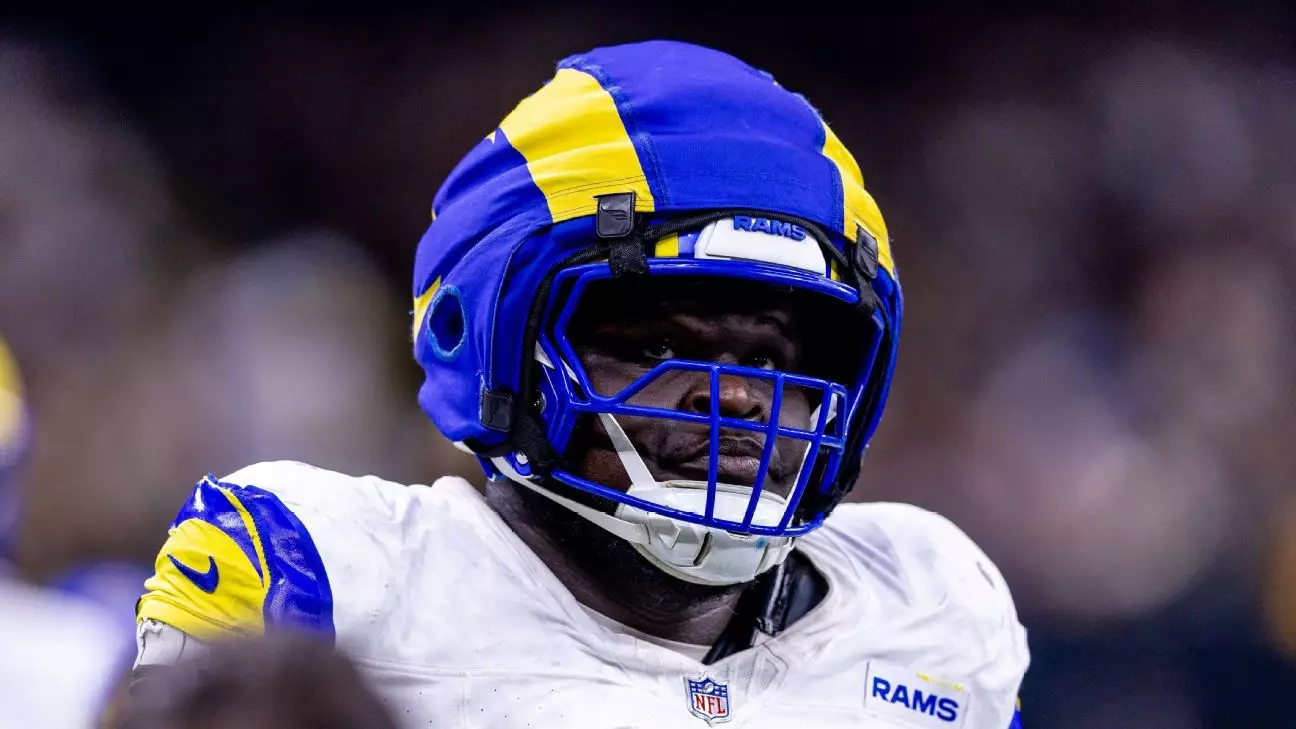As the NFL season wraps up, the league has reported a significant decrease in concussions, calling it the lowest count since data tracking began in 2015. The recent announcement of 182 total concussions during the games and practices—a striking 17% drop from last year—shows a promising trend. However, beneath these encouraging statistics lies a plethora of factors that demand consideration, raising questions about the sustainability of these changes and the ongoing necessity for improvement in player safety.
The statistic of 182 concussions is compelling, particularly when viewed against the previous low of 187 in 2022. Notably, this improvement does not factor in the abnormal conditions of the COVID-19-impacted season of 2020. In fact, the five-year average of 211.4 concussions reinforces the idea that while there has been a marked improvement, the league still operates above historical averages.
Key contributors to this downturn in concussion numbers, as identified by NFL officials Dr. Allen Sills and Jeff Miller, include advancements in helmet technology and the enforcement of mandated safety equipment, like Guardian Caps. These protective measures have supposedly enhanced player safety during practices and games, offering a tangible improvement. Yet, the numbers indicate a dual narrative; while the incidence may be lower, the driving forces behind these statistics warrant a deeper examination than surface-level interpretations.
A noteworthy aspect of this season’s report is that approximately 35% of players opted for better helmet models based on annual quality rankings—a stark contrast to the typical range of 14%-17% seen in prior years. Is this a decisive shift towards prioritizing safety, or just a reactionary move following increased scrutiny? This rise in helmet upgrades may appear promising, yet one must question whether such an adjustment is sustainable. Moreover, there’s a significant discrepancy between players who received helmets specifically designed for their positions and those who did not. This disparity raises concerns over a uniform commitment to safety across the entire league.
Additionally, the Guardian Caps were previously credited with a remarkable 50% reduction in practice-related concussions, but the credibility of this statistic requires careful evaluation. Of the 20 players who donned these caps during regular-season games by choice, it remains unclear if this small sample size can yield substantial insights into their effectiveness. Conclusively, the results from using Guardian Caps ask whether these measures are indeed protective or simply a temporary facade of safety amid ongoing issues related to player health.
This season’s implementation of modified kickoff rules has seen a purported 43% decline in the kickoff-related concussion rate. However, the total number of concussions on kickoffs remained unchanged compared to last year, indicating that while safety measures have been enacted, they may not be entirely effective. The rule changes led to an increase in overall returns, further complicating the statistical landscape. In light of these nuances, one cannot leap to conclusions without extensive data to support claims of success.
Furthermore, the NFL has developed methodological frameworks to address the issue of dangerous helmet impacts, particularly regarding situations in which players are traveling at high speeds. Preliminary data highlights an alarming statistic: hits meeting this criteria have a concussion rate 26 times higher than standard plays. Such insights provide alarming food for thought; if a specific area is identified as high-risk, why have comprehensive changes not yet permeated through the entire league?
While the NFL takes steps to address concussion safety, the continual evolution of these issues calls for an unrelenting commitment from league executives and stakeholders alike. The strides made this season must serve as a foundation for subsequent improvements rather than a plateau to rest upon. Engaging in conversations about player health through consistent education and better practices can lead to a stronger safety framework that will better protect athletes.
Though the NFL’s recent concussion figures mark a positive trend, they also reveal an urgent need for continual vigilance and improvement. The position players find themselves in is precarious, and the statistics, while encouraging, must not blind officials and stakeholders to the work that intricately lies ahead. The reaction to these numbers should not be one of complacency but rather an impetus for greater responsibility in safeguarding player health.


Leave a Reply